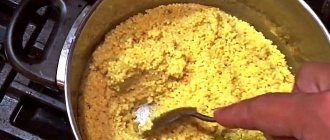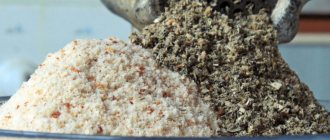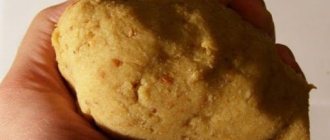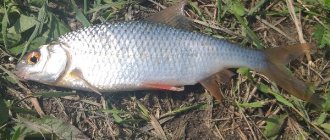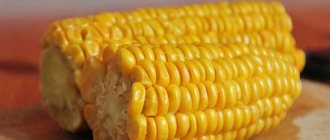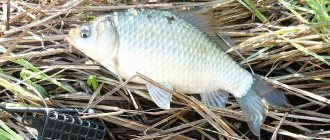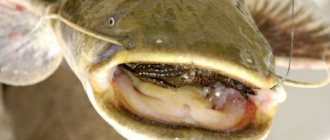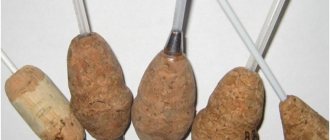Pea mastyrka is a fishing bait made from ingredients only of plant origin. As a base, fishermen use peas, flour, semolina, potatoes, bee honey, vegetable oils, sugar, and food additives. The consistency of mastyrka is very similar to tight pea dough or modeling clay.
This bait is most actively used in three capacities: as a filler for feeders, as bait and as an attachment. The pea crumpet is most effective when catching peaceful fish belonging to the carp family (roach, crucian carp, bream).
Pea mastyrka - a classic of the genre
Pea mastyrka for fishing is considered a universal plant bait. The classic version does not involve the use of additional components (dyes, honey, etc.). To prepare it you will need:
- 0.5 cups yellow split peas,
- 1/3 cup semolina,
- water.
The proportions are approximate. It may be necessary to increase (reduce) the amount of ingredients in the course of culinary creativity.
The drier the mastyrka, the faster it erodes. It's difficult to throw it far. This bait is used to catch fish standing under the shoreline (bream, ide). The heavier mastyrka holds well on the hook and is suitable for fishing from a boat and long casts.
Prepare a 3-liter saucepan and a wooden masher in advance.
Now you can start cooking pea mastyrka for fishing according to a time-tested recipe. 1. Carefully sort the peas. All black, green, dried, moldy grains will have to be thrown away: fish respect only a quality product. 2.Rinse the grain in running water, put it in a saucepan, cover with cold water, and leave for 2-3 hours to swell.
Note! After soaking, there should be enough water left in the pan to cover the peas by about 3 cm. Excess water should be drained, and if there is not enough liquid, add.
3. First put the pan on high heat, and after boiling the water, reduce it to a minimum. Cook the peas covered, stirring occasionally. When the grain becomes soft, the lid must be removed so that the water boils away faster. It is necessary to cook the peas until a homogeneous mass is formed (all the water must be absorbed!). This usually takes 60 minutes.
4.Pour semolina into the pea porridge while stirring continuously.
5.After the mixture has become homogeneous, turn off the stove. Allow the mixture to cool at room temperature.
6.Pass the mixture through a meat grinder with a fine grid and knead with your hands.
Mastyrka is ready. All that remains is to form balls from it: the mass should be easy to mold and not stick to your hands
Bait and bait supply
In general, if you make allowances for some of the features of this type of fishing, then everything is simple. Firstly, we remember the law: what we feed is what we catch. In our case, everything is exactly the opposite. What do we catch? That's what we try to feed. We cook peas for bait in almost the same way. just like we cooked it to make porridge for fishing, but slightly, so to speak, undercooked. This is done so that our bait still contains whole peas or their halves. Part of the porridge, therefore, when it gets into the water, will turn into a cloud of turbidity, and part will settle in the form of feeding grains. We do not add anything to the finished peas. except, perhaps, a small amount of the same semolina, for dregs.
When fishing, it doesn’t matter whether we fish with a float or a feeder, we throw our thin and slightly watery bait into the fishing spot like this. to create a rich and dense bait spot. We throw it without regret - after all, most of it is dregs, and the crucian carp will not eat it and will not get enough of it, it will only “work up” its appetite.
You can experiment with one very interesting addition to porridge - powdered milk for babies. The main thing is to choose something simple, without special additives, etc. We add the mixture to the porridge immediately before feeding, because it sours very quickly, especially in the heat.
Having tried this additive for the first time, I was sure that I would scare away all the fish, but within an hour the cage had become heavier by a good kilogram of good crucian carp, and the subsequent hours were generally remembered vaguely. I fished and fished and fished... After four hours of fishing I found an almost full cage in the water. I had to think about the catch rate and reel in my fishing rods. After this, if you plan to go crucian fishing, you always have powdered baby milk with you. It worked in different ways, sometimes better, sometimes worse. I will say one thing: I never scared the fish away, just the opposite.
Features of preparing mastyrka for crucian carp
Crucian carp is known among fishermen as having a sweet tooth. A classic bait may not interest capricious fish.
How to cook corn for carp fishing
A special pea mask for crucian carp will come to the rescue.
You will need the following products:
- 1 glass of peas,
- 0.5 cups semolina,
- a tablespoon of unrefined vegetable oil,
- 1 egg yolk,
- 1 tbsp. l. honey
The recipe for making mastyrka for crucian carp at the first stage is almost no different from the classic one. Add vegetable oil to the cooked peas, stir, and then add semolina.
Note! In this recipe, the mass should be very thick and difficult to stir.
Cool the hot mixture slightly, place on a cutting board and knead well with your hands. While kneading, add the yolk and lastly, honey.
A good catch is produced by pea mastyrka for crucian carp, prepared according to a different recipe:
- take pearl barley, millet and semolina in equal proportions, add the same amount of pre-soaked peas,
- cook, stirring, until completely softened,
- Cool the mixture a little and pass through a meat grinder with a fine grid,
- mix thoroughly, add a spoonful of honey and a few drops of anise.
Roll the dough into small balls.
Strong smells repel fish. It is not recommended to use alcohol-based anise drops for catching crucian carp. It is better to take oil or powder. The share of flavoring should not exceed 3–5% of the total mass.
Roll the dough into small balls
Mastyrka storage
Each portion is wrapped in a clean cotton piece of cloth and packaged in a dry bag or cling film. It is better to place all the “balls” in one container that is not afraid of freezing or in an ordinary dry plastic bag and in the freezer. Before fishing, we take out a portion in advance and leave it on a shelf in the refrigerator for even defrosting.
Such mastyrka can be stored for a long time, for months. You will save yourself from going to buy store-bought mastyrka, which often turns sour before you get the gear!
How to attract carp
Carp is a finicky fish. Prefers food that is aromatic and nutritious.
How to prepare potato mastyrka for carp:
- prepare a mixture of peas and semolina according to the classic recipe,
- without cooling, add any aromatic substance to it. Carp likes the smell of honey, halva (pre-crush), garlic and strawberries,
- boil the potatoes in their skins, mash them with a masher until pureed (do not remove the skins!),
- Combine both masses and knead until smooth.
How to cook peas for crucian carp
Catching crucian carp is a fascinating activity. Moreover, crucian carp is widespread and ubiquitous, unpretentious to environmental conditions and omnivorous. Plus, crucian carp reaches impressive sizes and can become a magnificent trophy even for an experienced and sophisticated fisherman.
But speaking about the omnivorousness and unpretentiousness of crucian carp, we must not forget how capricious and finicky it can sometimes be. It would seem that there are about a dozen baits and baits, everything is fresh, aromatic and should whet the appetite of this fat guy. But alas. There are no bites, although it is known for sure about the presence of a fishing object in the reservoir or even the fishing place itself. What is this? Cunning? Caprice? Weather influences?
I won’t lie if I say that I have no idea why crucian carp is so often capricious and responds to the most seemingly unthinkable and unexpected baits. But there is another crucian carp. Gourmet and glutton. This one almost always bites on one single bait - pea porridge.
Catching bait for bream
Bream is unpretentious in food. It goes well with classic bait, especially during the spring feeding period.
Note! Bream prefers soft bait. As it descends to depth, it becomes slightly wet with the formation of turbidity (“smoke,” as fishermen say).
Well-fed fish can be attracted with flavored mastyrka. It is prepared in the following way:
- cook porridge from peas and semolina according to traditional recipes,
- At the end of cooking, add breadcrumbs. We determine the quantity experimentally: the dough should be thick, but not too stiff,
- pour in 3 tbsp. l. hemp oil (a favorite delicacy of bream, it is not advisable to replace it with sunflower oil!),
- After cooling, divide the mass into several large pieces, add a little garlic juice and a teaspoon of coriander and cocoa powder to each. Knead thoroughly.
Bream bait dries quickly; it should be stored wrapped in a damp cloth.
Pea bait for crucian carp
But speaking about the omnivorousness and unpretentiousness of crucian carp, we must not forget how capricious and finicky it can sometimes be. It would seem that there are about a dozen baits and baits, everything is fresh, aromatic and should whet the appetite of this fat guy. But alas. There are no bites, although it is known for sure about the presence of a fishing object in the reservoir or even the fishing place itself. What is this? Cunning? Caprice? Weather influences?
I won’t lie if I say that I have no idea why crucian carp is so often capricious and responds to the most seemingly unthinkable and unexpected baits. But there is another crucian carp. Gourmet and glutton. This one almost always bites on one single bait - pea porridge.
The famous mastyrka from Mikhalych
The bait according to the recipe of the well-known video blogger Mikhalych is considered among fishermen to be the most catchy and versatile. It can be hung on a hook or used in feeders.
You will need: 7 glasses of water, 3 glasses of split peas, 2 glasses of semolina, 1/5 tsp. cinnamon, 2-3 tbsp. l. granulated sugar.
What to do with all this:
- pour water into a saucepan, let it boil,
- add peas, cook with regular stirring until tender,
- add sugar,
- mix a glass of semolina with cinnamon, gradually pour into the pea porridge,
- remove the pan from the stove and use a masher to thoroughly mash the mixture until smooth,
- add a second glass of semolina in small portions, continuing to work with the masher.
For which fish is pea bait suitable?
Peas for fishing help to catch large fish, including bream, carp, ide and carp. Pea bait also attracts smaller fish: roach, silver bream, chub, crucian carp. Peas are also used as bait, because they are well attached to the hook and rarely fly off during frequent casts.
Peas for feeding crucian carp are used in most recipes; they are more popular than bread crumbs, makukha, etc.
If fresh grains are not available, you can use pea cereal or canned peas. There is no point in counting on the catch, using dry peas in solid form; they must be soaked and boiled in advance.
Peas have been used for fishing since ancient times.
A few words about dyes
Experienced fishermen consider food coloring an important component. A bait of a certain color can both attract and deceive fish.
The following shades are usually used:
- yellow, the most attractive to all types of fish, especially crucian carp. For a brighter tone, you can add turmeric to the dough. It also serves as an additional flavoring agent.
- red, suitable for fishing at depth when the fish cannot see the bait well. Carp takes well to red dough,
- green is usually used in the summer, when the fish swim lazily among the algae. She may be afraid of bright baits, but she will mistake green baits for an aquatic plant.
Experimenting with the color of the mastyrka will help you choose the best option for a good bite.
Which variety is better to choose for bait?
The variety of peas directly depends on the method, style of fishing and the reservoir. If it is used as bait on a hook, whole grains must be used. According to the observations of experienced fishermen, it is better to take wrinkled peas for bait, and smooth varieties should be avoided due to excessive boiliness.
If whole peas are used when fishing for peas, then cereals with refined grains are used when preparing bait. Crushed grains are used in the process of making mastyrka - this is a catchable bait, often used for catching large fish. Mastyrka is prepared with the addition of other cereals, we recommend adding millet, semolina, corn, etc. It is also permissible to use peas when fishing with a feeder; the feeder is filled with the mixture with peas. Fishing with a feeder is most effective for hunting bream.
If fresh peas are used, they require minimal cooking, and dry peas must be soaked first. Without lengthy cooking, canned peas are also used as bait. To reduce cooking time or if it is not possible to obtain fresh grains, frozen peas are used.
cereals and porridges as bait
Various as bait for bream, ide, crucian carp, and roach . The finished grain attachment can be stored in the refrigerator for no more than three days. Cereals are placed on the hook in groups of 3-4, piercing them across. The sting is hidden in the latter, inserted lengthwise.
pearl barley porridge attachment for catching crucian carp
Crucian carp often in summer refuses to bite on baits other than pearl barley porridge with unrefined sunflower oil. Soak pearl barley for two hours. Then cook over low heat in plenty of salted water for about forty minutes. Pearl barley porridge is ready for attachment when the first grains begin to burst. The water is drained, sunflower oil with a smell is added to the porridge (it attracts crucian carp most of all) and cooled.
corn bait for catching crucian carp
Carp and crucian carp are well caught on corn using bottom fishing rods and carp gear. This is especially true for fishing on paid ponds. The fish are caught using canned corn. Not all corn is equally suitable for bait. White, small and cracked corn is not suitable. The best corn for fishing is yellow, large, fairly hard, with whole grains. If you do not know what quality the corn of a given brand is, then it is better to take several cans from different manufacturers. Poor quality can be limed for bait.
It is believed that the best corn for bait is the one cooked by the fisherman himself from a corn cob. Boil corn in salted water until the kernels are soft.
Milk-ripe corn from young cobs is used for catching crucian carp, roach, ide, and tench. There is no need to cook such soft grains; fish are caught using raw corn.
nozzle boiled peas
The pea attachment is suitable for catching bream, tench, and crucian carp. First, the peas are soaked for 5 hours. Cook the peas wrapped in cheesecloth over low heat for twenty minutes. Add a teaspoon of soda to 1 liter of water. Allow to cool in water, only then take out and unwrap the gauze.
Canned green peas are also suitable as a nozzle.
potato attachment
Potatoes are used as a topping either in their natural form or mashed with bread. Potato baits are used when fishing for carp, carp, crucian carp and bream.
natural potato attachment
Potatoes are boiled in salted water. It should turn out a little undercooked. You can cook it with beets, then the potatoes turn pink. Cut into cubes 1-2 centimeters. Place one or two cubes on the hook.
attachment mashed potatoes with bread
Boil one unpeeled potato in salted water. Peel and mash while still hot. Take a crumb of rye bread, approximately the size of one large piece. Stir the crumb with the potatoes, add a little anise or hemp oil. Knead until you get a viscous mass that does not stick to your hands. Place into small balls. A very good bait for catching fish that have not deservedly been forgotten.
